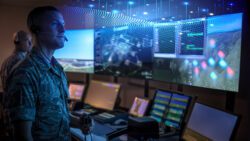Charles River Analytics, a developer of intelligent systems solutions, announces a new release of its Model Analyst’s Toolkit (MAT). MAT is a software application to help scientists create, analyze, refine, and validate complex scientific models using real-world data.
“MAT provides a deep understanding of both data and models, creating better explanations of why a model does what it does, uncovering invalid model assumptions or results, comparing models against large data sets and using that data to improve the models, and providing greater trust of validated models,” said Dr. Scott Neal Reilly, Vice President, Decision Management Systems. “It is a potent tool for scientists in many fields who are attempting to understand complex and interlinked behaviors in a systematic way.”
The latest MAT release, version 7.0.0, includes a variety of new features, including:
- A new user interface that simplifies many complex modeling and analysis tasks and allows users to explore multiple data views
- The ability for users to customize the user-interface layout
- Better support for data at large and small scales (e.g., neurological data and geological data)
- New types of causal analysis, including a dynamic-offset correlation mechanism inspired by work in gait recognition
- Automatic feature extraction to identify “interesting” events in streams of data
- The ability to generate new data sets based on raw data, such as by taking logarithms, changing the scale of a data set, or computing aggregate data such as to compute per capita data by dividing a data source by the changing population size
- Data mining and machine learning techniques that can automatically recommend adjustments to scientific models to make them better explain the available data
The Office of Naval Research (ONR) has funded MAT for the past five years.
MAT is available for free for academic and US government researchers. To learn more about the features and benefits of MAT, or to request a copy of the software, see our MAT page.
This material is based upon work supported by the United States Navy, under Contract No. N00014-12-C-0653. Any opinions, findings and conclusions or recommendations expressed in this material are those of the author(s) and do not necessarily reflect the views of the United States Navy.




